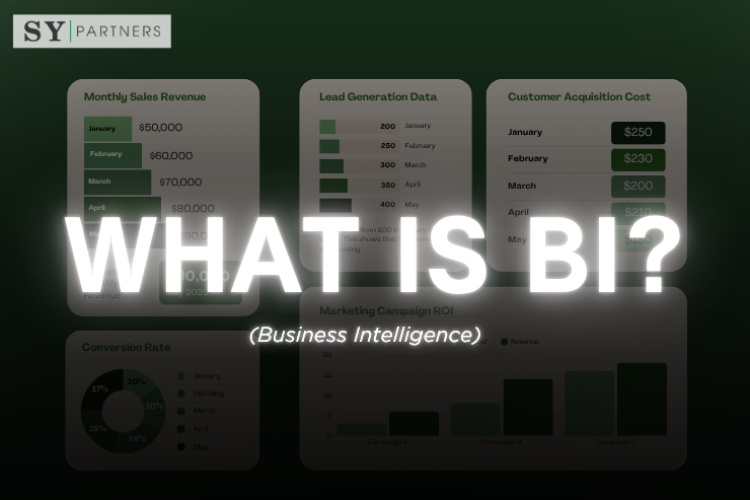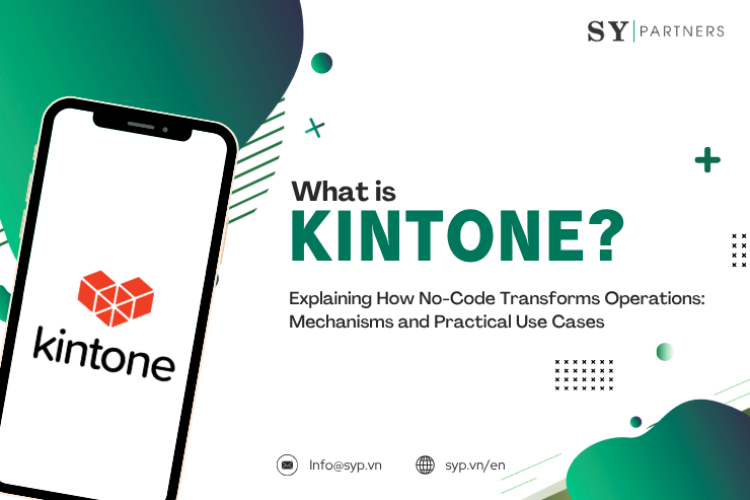A Content Management System (CMS) is an essential foundation for running websites, e-commerce sites, and corporate-owned media. In addition to traditional platforms like WordPress and Drupal, recent years have seen the emergence of headless CMS and cloud-based CMS solutions, offering flexible operations tailored to different goals and scales.
Far more than just a site-building tool, a CMS is a critical business infrastructure that supports information delivery, customer experience optimization, and brand strengthening. For small and medium-sized enterprises in particular, the ability to update and operate quickly at low cost is a major advantage.
This article highlights essential CMS terms that you should know to use these systems effectively. Each term is explained clearly with examples, making it immediately useful for beginners as well as business professionals in SMEs.
A
| Term | Definition |
|---|
| Accessibility | Ensuring CMS content can be used by people with disabilities, following standards like WCAG. |
| Admin Panel | The backend interface of a CMS where administrators manage content, users, and settings. |
| API | Application Programming Interface – allows other apps or services to communicate with the CMS. |
| Archive | A section of the CMS that stores older or past content, often organized by date or category. |
| Asset | Any digital file (images, videos, documents) stored and managed within the CMS. |
| Audit Trail | A record of changes and activities performed within the CMS for accountability. |
| Author | A CMS role assigned to users who create and manage their own content. |
B
| Term | Definition |
|---|
| Backend | The administrative side of the CMS where content and settings are managed. |
| Backup | A saved copy of CMS data used for recovery in case of failure or loss. |
| Block Editor | A modern CMS content editor where content is built from modular blocks. |
| Blog Module | A CMS feature that allows creating and managing blog posts. |
| Breadcrumb | A navigation aid that shows the user’s location in the CMS hierarchy. |
| Browser Cache | Local storage in a user’s browser that helps CMS pages load faster. |
| Bulk Edit | A function that allows editing multiple content items at once. |
C
| Term | Definition |
|---|
| Cache | Temporary storage used to speed up content delivery in a CMS. |
| CDN | Content Delivery Network – distributes CMS content globally for faster access. |
| Category | A taxonomy element used to group and organize CMS content. |
| CMS | Content Management System – software used to create, manage, and publish content. |
| Content Type | A structured format for content, e.g., articles, products, or events. |
| Contributor | A CMS role with limited permissions, usually to draft but not publish. |
| Custom Field | User-defined fields to store additional metadata in content. |
| CSS | Cascading Style Sheets – controls the presentation and design of CMS content. |
D
| Term | Definition |
|---|
| Dashboard | The main admin screen in a CMS displaying key metrics and shortcuts. |
| Data Migration | The process of transferring content and data from one CMS to another. |
| Database | The storage system that holds all CMS content, users, and settings. |
| Deployment | The act of pushing updated CMS content or code into production. |
| Draft | A saved but unpublished version of content in a CMS. |
| Drag-and-Drop | A feature allowing users to move elements in the CMS by dragging them. |
| Dynamic Content | Content that changes based on rules, conditions, or user behavior. |
E
| Term | Definition |
|---|
| Editor Role | A CMS user role with permissions to edit and publish content. |
| Embed | Adding external content (like video or social media posts) into CMS pages. |
| Endpoint | A specific API URL where the CMS exposes or receives data. |
| Error Log | A record of issues and system errors occurring in the CMS. |
| Export | The process of downloading CMS data or content for use elsewhere. |
| Extension | A software add-on that adds new features to a CMS. |
F
| Term | Definition |
|---|
| Favicon | A small icon that represents the CMS site in browser tabs. |
| Feed | A stream of content updates, often in formats like RSS or Atom. |
| File Manager | The CMS tool for uploading, organizing, and managing files. |
| Filter | A CMS feature that allows sorting or narrowing down content lists. |
| Firewall | A security system protecting the CMS from malicious traffic. |
| Frontend | The public-facing side of a CMS that end users interact with. |
| Full-Text Search | A CMS function that searches all content, not just titles or metadata. |
G
| Term | Definition |
|---|
| Gallery | A CMS feature for displaying multiple images in a structured layout. |
| Git Integration | Connecting a CMS to Git for version control of code or content. |
| Global Navigation | The main navigation menu available across all CMS pages. |
| Governance | Policies and rules that control how content is managed within a CMS. |
| Grid System | A layout structure in a CMS that aligns content into columns and rows. |
H
| Term | Definition |
|---|
| Header | The top section of a CMS page, usually containing the logo and navigation. |
| Headless CMS | A CMS that provides content via APIs without controlling the frontend. |
| Hierarchy | The organizational structure of CMS content, often shown as parent/child. |
| Hosting | The service that provides the server space where the CMS is deployed. |
| HTML Editor | A tool in CMS allowing raw HTML editing for advanced customization. |
I
| Term | Definition |
|---|
| Icon Library | A collection of icons stored in the CMS for design consistency. |
| Import | Bringing external content or data into the CMS. |
| Indexing | The process by which search engines or the CMS itself catalog content. |
| Integration | Connecting the CMS to third-party tools or services. |
| Interface | The way users interact with the CMS, including dashboards and editors. |
J
| Term | Definition |
|---|
| JavaScript | A scripting language used in CMS themes and plugins for interactivity. |
| JSON | JavaScript Object Notation – a data format often used in CMS APIs. |
| Joomla! | An open-source CMS platform used for building websites. |
| jQuery | A JavaScript library sometimes used in CMS themes and plugins. |
K
| Term | Definition |
|---|
| Key Performance Indicator (KPI) | Metrics used to measure the success of CMS content and performance. |
| Keyword | A specific term used in content for SEO optimization within the CMS. |
| Knowledge Base | A structured repository of articles and guides managed through a CMS. |
| Kubernetes | A system sometimes used to manage CMS deployments in containers. |
L
| Term | Definition |
|---|
| Landing Page | A standalone page in a CMS designed for marketing or campaigns. |
| Layout | The arrangement of elements on a CMS page. |
| Library | A collection of reusable assets (media, templates, or components) in a CMS. |
| Link Management | CMS tools to handle internal and external links. |
| Localization | Adapting CMS content for different languages and regions. |
| Log File | A file recording system activities, user actions, and errors in the CMS. |
M
| Term | Definition |
|---|
| Media Library | A CMS repository for storing and managing images, videos, and documents. |
| Metadata | Descriptive information about content, such as author, date, or tags. |
| Migration | The process of moving content and settings from one CMS to another. |
| Module | A self-contained CMS component that adds functionality (e.g., contact form). |
| Multisite | A CMS setup where multiple websites share a single installation. |
| Multilingual Support | The ability of a CMS to manage content in multiple languages. |
N
| Term | Definition |
|---|
| Navigation Menu | A CMS element that provides links to different sections of the site. |
| Nested Pages | Pages structured in a parent–child hierarchy within the CMS. |
| Newsletter Integration | Connecting a CMS with email marketing tools for campaigns. |
| Node | A basic content item in some CMSs (e.g., Drupal). |
| Notification | An alert or update message inside the CMS for users or admins. |
O
| Term | Definition |
|---|
| Open Source | A CMS whose source code is freely available for modification and use. |
| Optimization | Enhancements made in the CMS for better performance or SEO. |
| Output | The final rendered content that the CMS delivers to end users. |
| Overlay | A UI element in a CMS that appears on top of the current page, like a modal. |
| OAuth | An authorization framework often used in CMS for secure user login. |
P
| Term | Definition |
|---|
| Page Builder | A drag-and-drop CMS tool for creating custom page layouts. |
| Page Template | A predefined structure that determines the layout of a CMS page. |
| Pagination | Dividing long lists of content into multiple pages in the CMS. |
| Permission | Rules that control what users can do in the CMS. |
| Plugin | An add-on that extends CMS functionality. |
| Preview | A feature that shows how content will look before publishing. |
| Publishing Workflow | The process from drafting to reviewing and publishing CMS content. |
Q
| Term | Definition |
|---|
| Query | A request to retrieve data from a CMS database. |
| Queue | A list of tasks or processes waiting to be executed by the CMS. |
| Quick Edit | A CMS function for making fast, inline changes to content. |
| Quota | Limits on resource usage (e.g., storage or bandwidth) in the CMS. |
R
| Term | Definition |
|---|
| Redirect | A rule that forwards users from one URL to another in a CMS. |
| Repository | A storage location for code, templates, or plugins used in the CMS. |
| Responsive Design | Ensuring CMS content adjusts properly across devices and screen sizes. |
| Revision | A saved version of content that allows rollback or comparison. |
| Role | A set of permissions assigned to CMS users (e.g., admin, editor). |
| RSS Feed | A syndication format generated by CMS content for distribution. |
S
| Term | Definition |
|---|
| SaaS CMS | A cloud-based CMS provided as Software-as-a-Service. |
| Schema Markup | Structured data added in CMS content to improve SEO and search results. |
| Section | A defined content area or block in a CMS page. |
| SEO | Search Engine Optimization – improving CMS content visibility in search engines. |
| Session | A temporary user interaction state stored while using the CMS. |
| Shortcode | A small code snippet in a CMS that dynamically inserts content or functions. |
| Sitemap | A hierarchical list of pages generated by the CMS for navigation or SEO. |
| Staging Environment | A CMS environment for testing before publishing live. |
| Style Guide | A set of design and content rules applied consistently in the CMS. |
| Subdomain | A separate web address managed within a CMS under the main domain. |
T
| Term | Definition |
|---|
| Tag | A taxonomy element for labeling and organizing CMS content. |
| Taxonomy | A classification system in CMS for grouping content. |
| Template | A predefined layout that structures how content is displayed. |
| Theme | A collection of templates and styles that define CMS appearance. |
| Thumbnail | A small preview image generated by the CMS. |
| Token | A placeholder in the CMS that is replaced with dynamic data. |
| Two-Factor Authentication (2FA) | An extra layer of CMS login security requiring a second step. |
U
| Term | Definition |
|---|
| UI | User Interface – the design and layout of the CMS backend or frontend. |
| Update | A software release that patches or improves the CMS. |
| Upload | Adding a file from a local device into the CMS. |
| URL Slug | The part of a URL that identifies a page in a CMS, usually editable. |
| User Role | A defined set of permissions assigned to users in the CMS. |
| UX | User Experience – how intuitive and effective the CMS feels for end users. |
V
| Term | Definition |
|---|
| Validation | The process of checking that CMS content or data meets required rules. |
| Version Control | Tracking and managing changes to CMS code or content. |
| Version History | A record of all saved revisions of a CMS content item. |
| Visual Editor | A WYSIWYG editor in the CMS for formatting content without code. |
| Visitor Analytics | Data about how users interact with CMS content. |
W
| Term | Definition |
|---|
| WAF | Web Application Firewall – protects CMS from malicious attacks. |
| WAI-ARIA | Accessibility standards applied in CMS interfaces. |
| WYSIWYG | “What You See Is What You Get” editor in CMS content editing. |
| Widget | A modular CMS component that adds functionality to a page. |
| Workflow | The sequence of steps content follows before being published. |
| WordPress | The most widely used open-source CMS platform. |
X
| Term | Definition |
|---|
| XML Sitemap | A machine-readable sitemap generated by a CMS for search engines. |
| XML-RPC | A protocol some CMS platforms use for remote communication. |
| XSS Protection | Security measures in CMS to prevent Cross-Site Scripting attacks. |
Y
| Term | Definition |
|---|
| YAML | A data serialization format used in some CMS configurations. |
| Yoast SEO | A popular SEO plugin used in WordPress CMS. |
| YAML Front Matter | Metadata stored at the top of CMS content files in static site generators. |
Z
| Term | Definition |
|---|
| Zapier Integration | A tool that connects CMS to other apps for automation. |
| Zero Downtime Deployment | Updating CMS without affecting live availability. |
| ZIP Import | Uploading CMS themes, plugins, or assets in .zip format. |
| Zone File | A DNS configuration file used to direct traffic to CMS-hosted sites. |
Conclusion
A CMS is the foundation that supports website management, customer acquisition, and brand communication. The terms introduced in this article provide essential knowledge for beginners and small to medium-sized businesses to use a CMS efficiently and securely.
By leveraging plugins and themes, you can ensure flexibility, while SEO and responsive design strengthen both customer acquisition and user experience. Furthermore, adopting cloud-based or headless CMS enables cost-effective operations with high scalability.


 EN
EN JP
JP KR
KR




